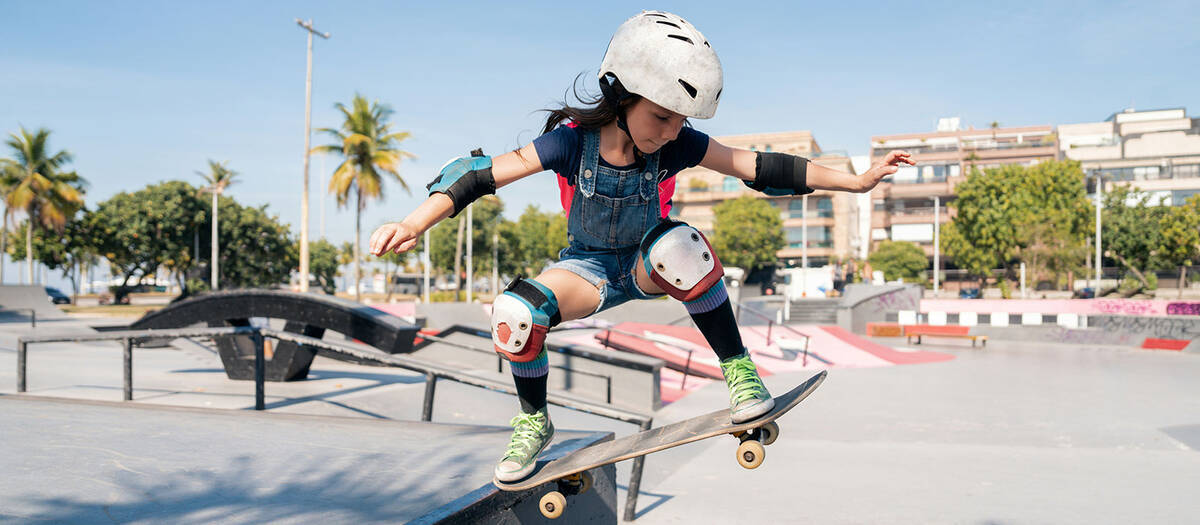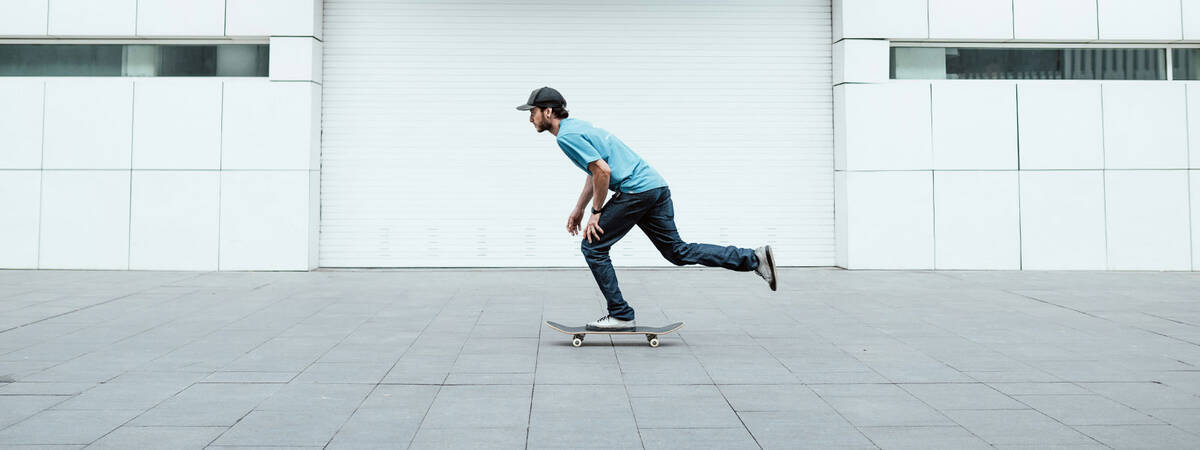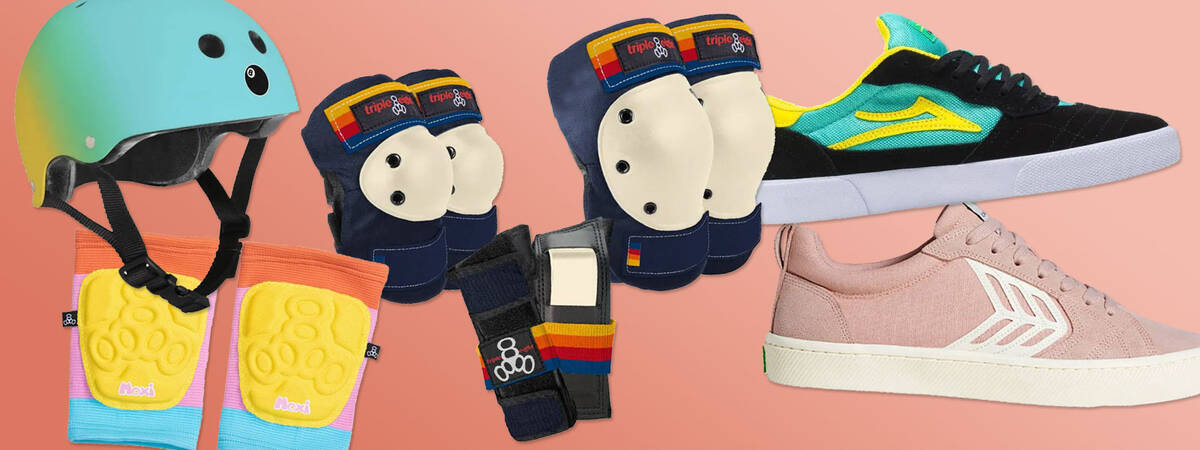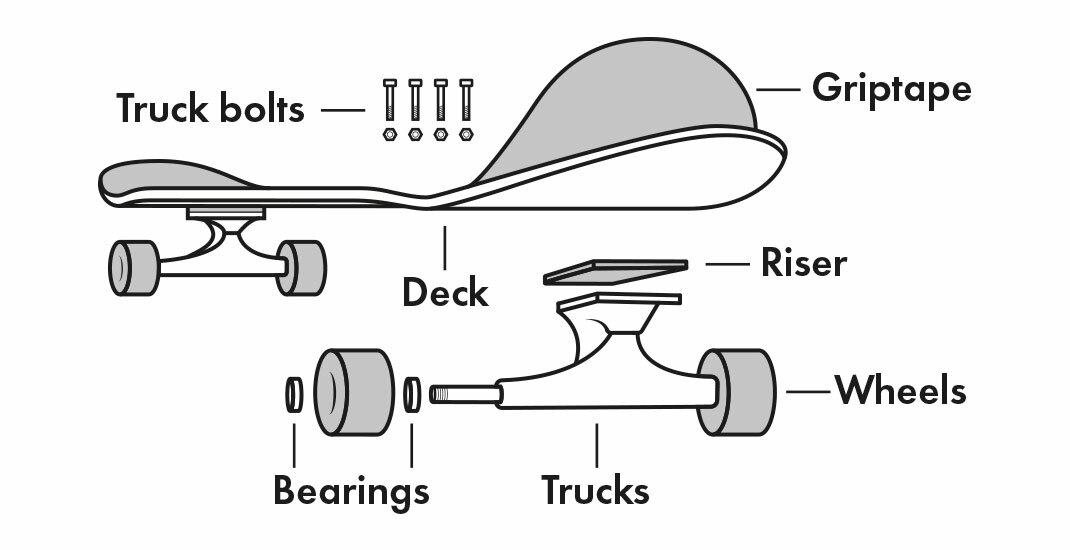Purchasing Skateboards – A Novice's Handbook
Selecting a beginner skateboard necessitates careful consideration of various options. The distinctions among skateboards are more extensive than one might assume, and through this guide, our intention is to illuminate critical questions you may have. Whether you're starting afresh or revisiting skateboarding after a significant pause, we hope to assist.
Overview
Types of Skateboards for Novices

When selecting your initial skateboard, it's important to think about the style of skateboarding you believe will bring the most enjoyment. Through experience, your skateboard preference will become more discernible, allowing for more tailored selections. Initially, it's prudent to choose a versatile skateboard accommodating various tricks and strategies. Specialised selections aren't necessary at this juncture.
Navigating between these three primary types of skateboards will be your initial task:
- Skateboards: Utilised for street and park skating, these trick-focused boards feature concave decks with dual kick tails and smaller wheels. They serve as a stable base for beginners venturing into skateboarding.
- Cruiser Skateboards: For those primarily interested in transportation or leisurely cruising, a cruiser skateboard is optimal. Wider decks and softer wheels offer a more comfortable ride, ensuring smoother navigation over rough surfaces. If cruisers interest you, refer to our Guide to Buying Cruiser Skateboards or explore our selection of premium Cruiser Skateboards.
- Longboards: Longboards present an excellent choice for beginners prioritising stability and smoothness. Ideally suited for commuting and downhill ventures, they offer a tranquil introduction to skateboarding. Disciplines like longboard dancing, freestyle, or downhill riding are available. For those inclined towards longboarding, consider our Guide to Buying Longboards or peruse our Longboards collection.
This guide primarily targets regular skateboards, which are well-suited for beginner skateboard tricks.
Top Skateboards for Young Novices

When seeking beginner skateboards for girls or cool boards for boys, rest assured—there are plenty of designs to suit individual aesthetic preferences.
An affordable skateboard is adequate for the initial learning phase. However, consider whether your choice should support future growth as a skater.
Eventually, progressing to more complex tricks like popping ollies demands a sturdy and responsive deck to maximise efforts. At this stage, investing in a slightly more expensive complete skateboard is worth considering, though it's not required.
Key factors to note when opting for a complete children's skateboard include:
- Deck width: Choose a width corresponding to the child's shoe length. A board that's too wide may hinder steering, whereas a narrow one could affect stability. Consult our Skateboard Size Guide for more information or explore further specifics within this guide.
- Wheel hardness: A maximum wheel hardness of 92A is suggested for beginners. Softer wheels minimise abrupt stops when traversing small stones or cracks, reducing falls that could deter new skateboarders.
- Bushings: For children below 65 kg, bushings under 90A hardness are advisable. Truck bushing hardness influences the steering pressure needed to guide the board directionally. Softer bushings (lower durometer) facilitate steering; harder bushings (higher durometer) make steering more challenging.
Our selection of Complete Skateboards enables filtering by wheel hardness and deck length to showcase options aligned with your requirements.
Optimal Skateboards for Adult Novices

Geared with the right complete beginner skateboard, adults can confidently embark on their skateboarding journeys, regardless of prior experience. Whether completely new or revisiting after some time, there's a complete skateboard to meet your needs. However, choosing wisely is prudent—adults generally weigh more than teenagers.
When selecting an appropriate complete skateboard for an adult beginner, bear the following specifications in mind:
- Wood type: Opt for a 7-ply maple deck, steering clear of Chinese maple due to its relative softness and reduced durability, a result of rapid growth. Maple from cooler climates grows slower, yielding more robust decks with better pop and longevity.
- Adult skateboard size: For a suitable size, match the deck width roughly to your shoe size. A board wide enough for your feet simplifies steering. While beginners should adhere to our general guidelines (outlined below), as you advance, your preferences may deviate.
- Wheel hardness: Go for a hardness beneath 97A; softer wheels absorb more terrain vibration. While skilled skaters might favour harder wheels (above 97A), novices benefit more from softer alternatives.
- Bushings: Truck bushing hardness impacts steering efficiency. Generally, heavier people prefer harder bushings. For weights between 65 - 79 kg, choose bushings between 85A to 95A; for those 80 kg and above, opt for 91A or higher bushings.
Rekindling Skateboarding as an Adult
Age is no barrier to skateboarding! Your previous experience holds value; even after a hiatus, you won't be starting anew. Skateboarding essentials endure—a wooden deck, two trucks, and four wheels.
Re-engaging with skateboarding? Choose a board that aligns with your objectives and trust your muscle memory. Whether conquering the skatepark or exploring local spots, the right board choice complements your aims.
Boards for older enthusiasts often cater to cruising, as hardcore action may be unnecessary. If returning to skateboarding, consider a wider deck with softer wheels. For occasional tricks, ensure both ends have kick tails.
Experienced skaters understand skateboard components, making customisation an ultimate option. Visit our Custom Skateboard Builder or explore our vast range of Skateboard Parts to build your ideal setup.
Selecting the Ideal Skateboard Size for Novices
By adhering to our skateboard size chart, you can find the right size for your first board. Deck width is a primary sizing concern. As your interests evolve, you'll favour sizes aligning with your riding style. Beginners should choose based on shoe size.
For a child's first skateboard, consulting the size table is advisable.
| Skateboard Width | Recommended Age | Shoe size US | Shoe size UK | Shoe size EU |
| 6.5"" | 3 - 5 | 6C - 11C | 5Y - 10Y | 23 - 28 |
| 6.75" | 3 - 5 | 7C - 11C | 6Y - 10Y | 24 - 28 |
| 6.825" | 4 - 6 | 9C - 12C | 8Y - 11Y | 26 - 30 |
| 7.0" | 5 - 7 | 10C - 1 | 9Y - 12Y | 28 - 32 |
| 7.125" | 6 - 8 | 11C - 2 | 10Y - 1 | 29 - 33 |
| 7.25" | 7 - 9 | 12C - 3 | 11Y - 2 | 30 - 34 |
| 7.375" | 8 - 10 | 13C - 4 | 12Y - 3 | 31 - 35 |
| 7.5" | 9 - 11 | 1 - 6 | 13Y - 5 | 32 - 38 |
| 7.625" | 10 - 12 | 2 - 7 | 1 - 6 | 33 - 39 |
| 7.75" | 12 - 14 | 4 - 9 | 3 - 8 | 35 - 42 |
| 7.875" | 12 - 14 | 4 - 9 | 3 - 8 | 35 - 42 |
| 8" & Up | 14 & Up | 9 & Up | 8 & Up | 42 & Up |
Skateboarding Advice for Newcomers

Gaining fundamental skateboarding skills requires time and effort. Yet, the simplest advice remains: persevere! Enjoy yourself, listen to your instincts, and you'll be gliding through the skatepark in no time. Here's some practical advice for your journey:
Helmets and Pads for Novice Skateboarders
All skaters, beginners or seasoned, are urged to wear helmets and padding. Fear of falling can impede progression, but quality skateboard wrist, knee, and elbow pads, coupled with a certified skate helmet, can alleviate fear, enhancing performance and safety. Essential for any beginner!
Explore our array of Skateboard Pad Sets and certified Skateboard Helmets.
Our range of Skateboard Protection for Kids offers leading helmets and pads for youngsters.
Footwear for Skateboarding
Investing in specialised skate shoes from renowned brands can be a smart choice. Although any pair of trainers might suffice for skating, eventually you'll be inclined to opt for dedicated skate shoes.
Why choose authentic skate shoes?
Primarily, they enhance your skating skills: with flat soles and superior grip, they offer outstanding traction on the deck. These soles are engineered to maximise "board feel," augmenting your sense of control over the board, which in turn leads to improved responsiveness and greater control while skateboarding.
Additionally, skate shoes are crafted to withstand the rigours of skateboarding. This activity can be tough on your shoes. High-quality skate shoes are more durable and will endure many more sessions than an ordinary pair of trainers.
Explore our range of Skate Shoes.
Skateboarding Trousers
While skating, it’s essential to have trousers that are both flexible and tough. As a novice, you're likely to fall frequently, and your trousers will face the consequences. Moreover, it's crucial they do not restrict your movements. It's advisable that skate trousers are either made from stretchable fabric or have a loose fit.
If your trousers don't hinder your movements and use sturdy material, they'll be suitable for skating. Indeed, many popular skate trousers resemble work trousers. Explore our collection to find your new dedicated Skate Pants. We also offer a great selection of Skater Belts!
Adjusting Skateboard Trucks
You can alter your skateboard's manoeuvrability by adjusting the tightness of the trucks. As you ride, the skateboard should respond directionally according to your lean. If it doesn't, try easing the trucks a bit. Conversely, if it becomes challenging to keep control due to too much movement, consider tightening the trucks. Adjusting the kingpin nut can significantly alter your skateboard’s riding characteristics!
As each rider has unique body dynamics, the force applied to the trucks differs. Thus, there's no one-size-fits-all for truck tightness, so it’s worthwhile to experiment to discover the ideal balance for stable and consistent riding.
Watch this video to learn how to adjust your skateboard trucks, and remember that a Skate Tool is a cost-effective, long-lasting investment.
Skateboard Components – Understanding a Skateboard

If you’re seriously into skateboarding, assembling a custom skateboard yourself is the best option. Even when purchasing a beginner complete, understanding the fundamental skateboard components—otherwise known as the anatomy of a skateboard—can be invaluable.
There are many reasons to choose a custom skateboard as a beginner. Whether drawn to the graphics on a separate deck or aiming for high-quality trucks, building your skateboard allows you to pick the exact parts you require.
Should you find applying grip tape or mounting wheels daunting, take a look at our Custom Skateboard Builder. Our knowledgeable team can assemble the entire skateboard for you, ensuring it’s ready to ride the moment it arrives.
Here’s a brief overview of the various parts of a skateboard:
Skateboard Decks
Typically made from wooden layers known as ply, skateboard decks for trick skateboards are commonly 7-ply maple. The best beginner decks utilise harder maple varieties to ensure durability. The deck is a crucial component, serving as the platform for all tricks and manoeuvres.
Read our comprehensive Guide to Buying Skateboard Decks, or peruse our full range of Skateboard Decks.
Skateboard Trucks
Situated beneath the deck, skateboard trucks consist of metal T-shaped elements where the wheels are attached. They function as the steering mechanism of the complete skateboard, playing a pivotal role in shaping its manoeuvrability and riding features.
For detailed information about skateboard trucks, including insights on bushings, hangers, and baseplates, consult our in-depth Skateboard Truck Buying Guide. If you know what you're looking for, browse our complete range of Skateboard Trucks.
Skateboard Wheels
Made from polyurethane, skateboard wheels vary in size, hardness, and shape, significantly influencing the skateboard’s smoothness, speed, and grip.
Beginners should pay attention to wheel hardness, measured on the durometer scale. We have these general recommendations for novice skateboarders:
- Kids should select wheels with a durometer of 92A or below.
- Adults new to skateboarding should opt for wheels with a durometer of 97A or below.
For learning tricks, it’s recommended that beginners choose wheels sized between 52 and 54 mm in diameter.
For an in-depth look at skateboard wheels, explore our comprehensive Guide to Buying Skateboard Wheels. Feel free to browse our complete selection of Skateboard Wheels. To simplify the process, filter wheels by hardness or any other specifications that suit you best.
Skateboard Bearings
Located within the wheel cores, skateboard bearings enable smooth and efficient rotation, facilitating minimal friction on the board. Bearings come in various ABEC ratings, from ABEC 1 to ABEC 9, with higher numbers indicating smoother operation. However, factors such as material quality, lubrication, and maintenance often outweigh the importance of the ABEC rating with regard to performance. Thus, as a beginner, you needn't focus excessively on the ABEC rating.
If your wheels aren't rotating as well as they used to, refer to our guide on How to Clean and Maintain Bearings.
Discover our full selection of Skateboard Bearings, or delve deeply into the technical details with our comprehensive Bearing Guide.
Skateboard Griptape
The rough, sandpaper-like material on top of the skateboard deck, known as griptape, is essential for board control, preventing slipping. As you move your feet along the deck, griptape provides vital friction. A sliding motion along its length, paired with a well-timed pop of the kicktail, allows you to elevate the board in ollies.
Griptape comes in numerous colours, with options for graphics or clear versions. Browse our varied selection of Skateboard Griptape.
Watch th
